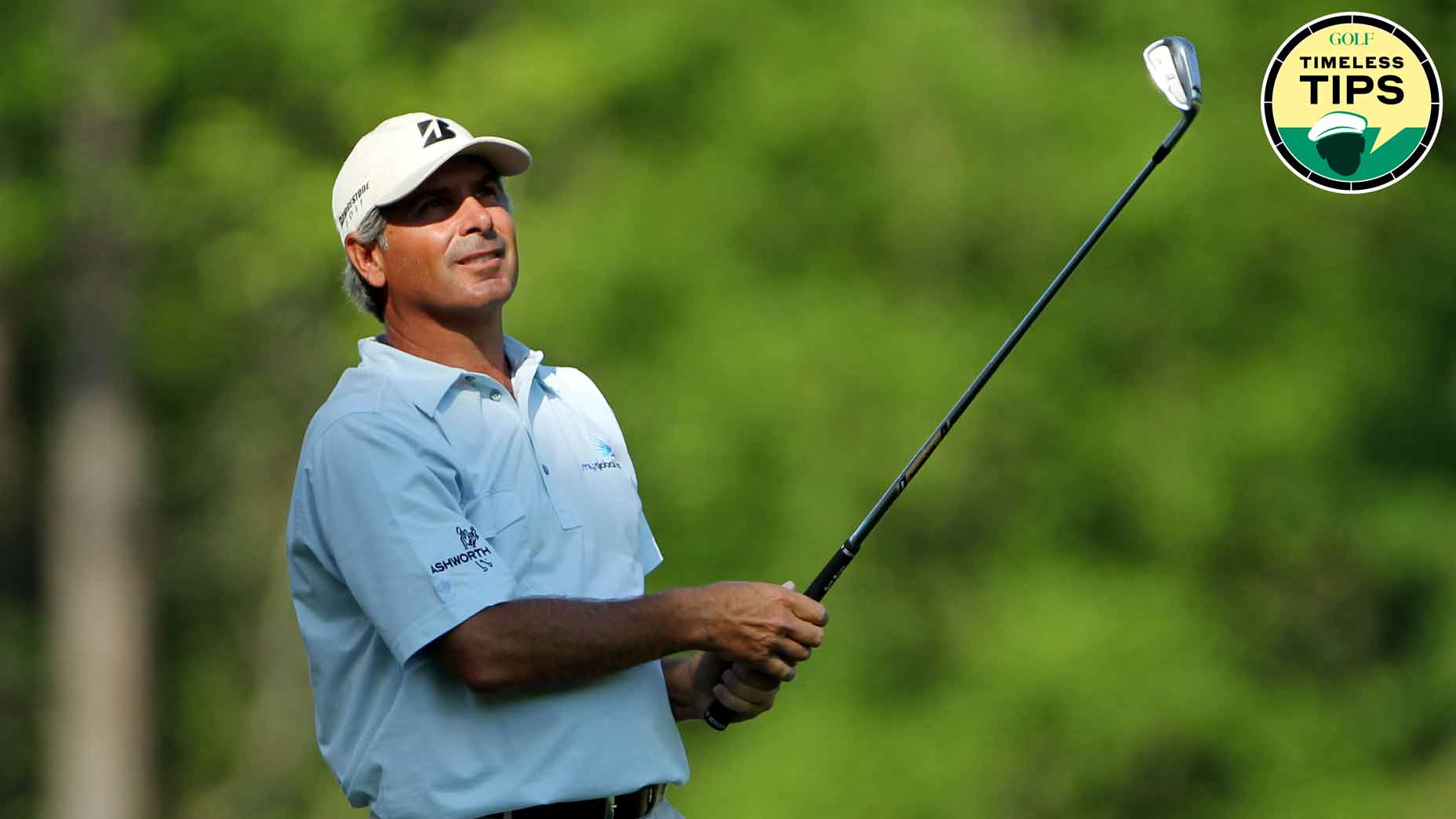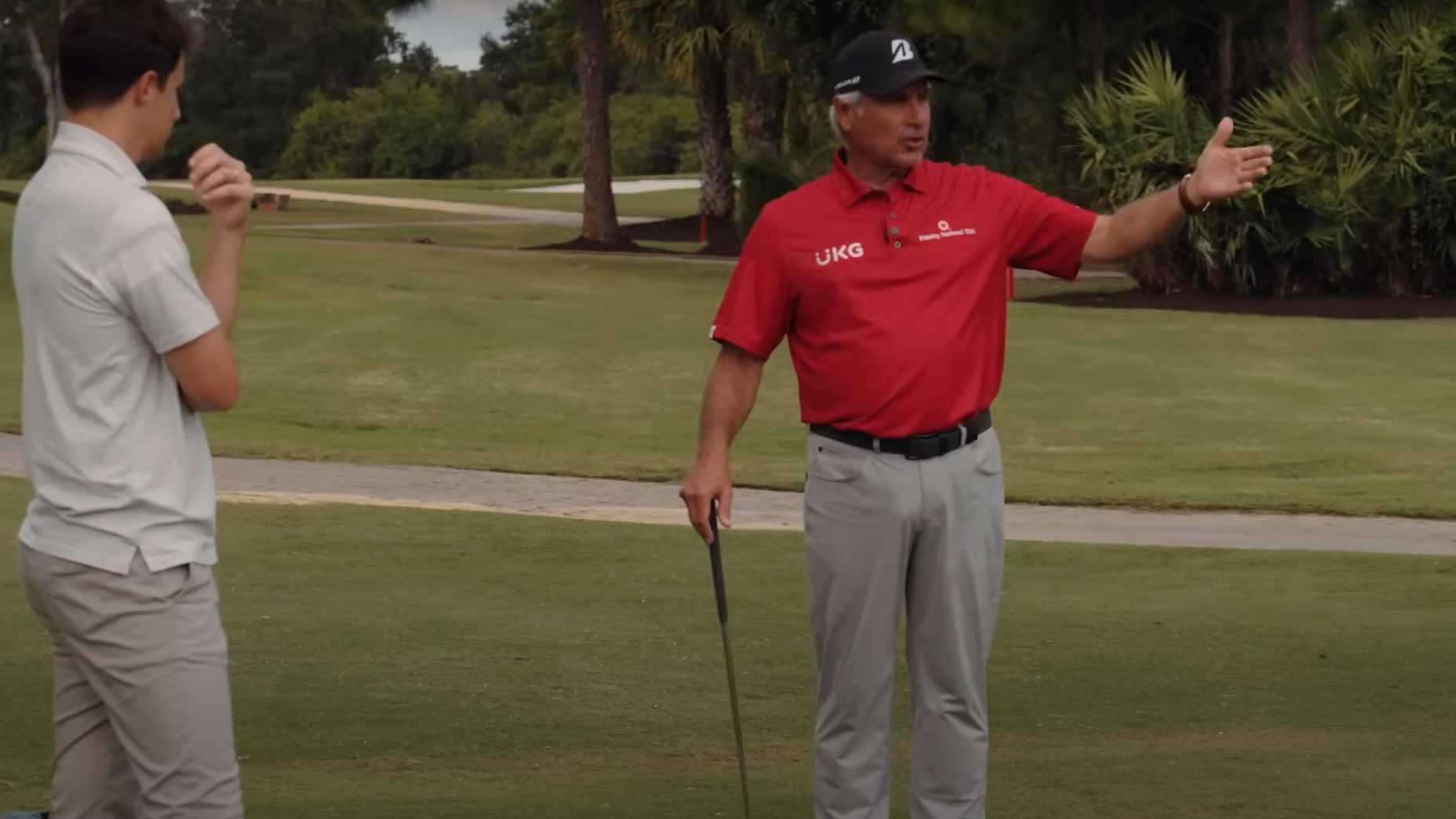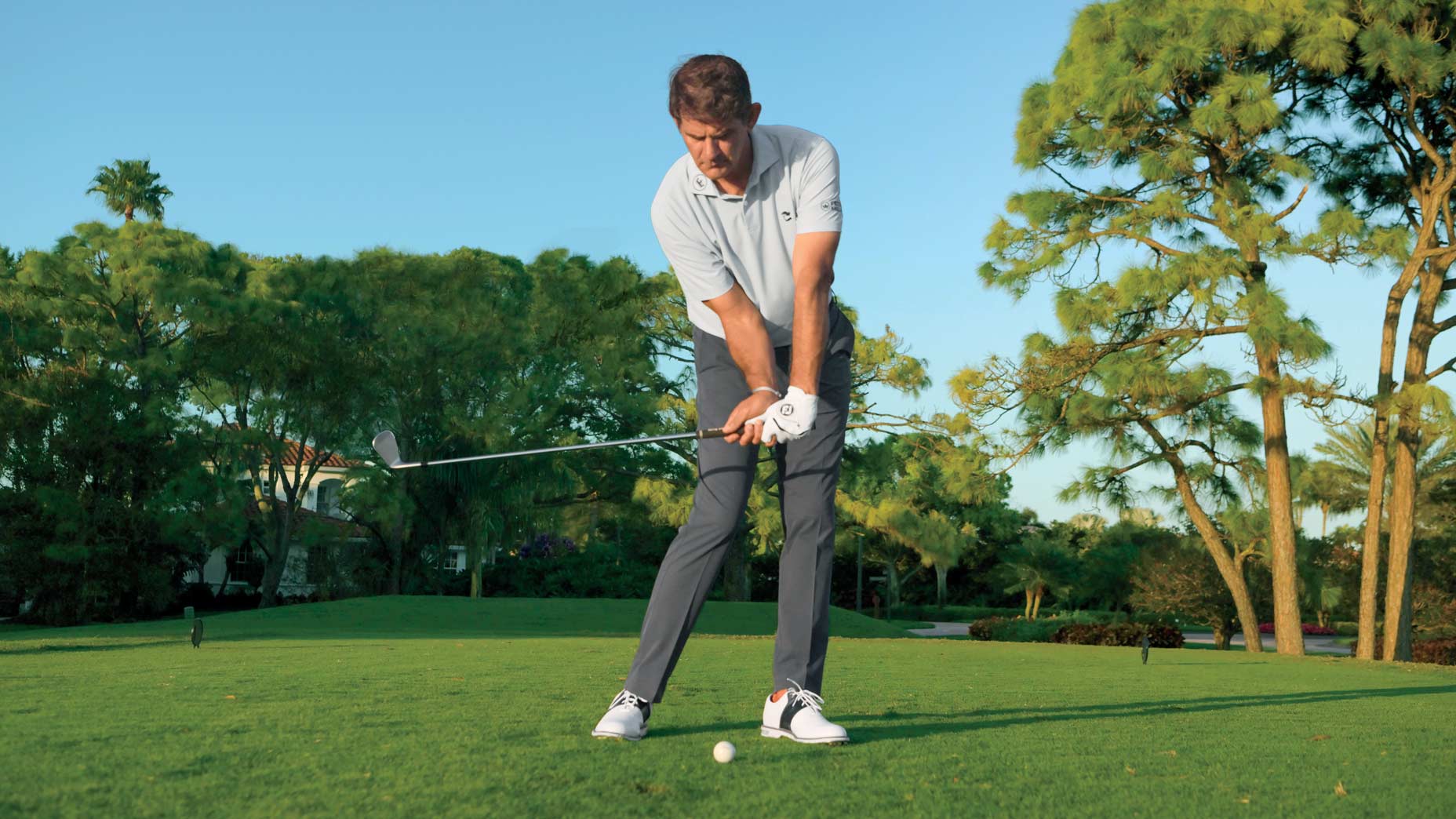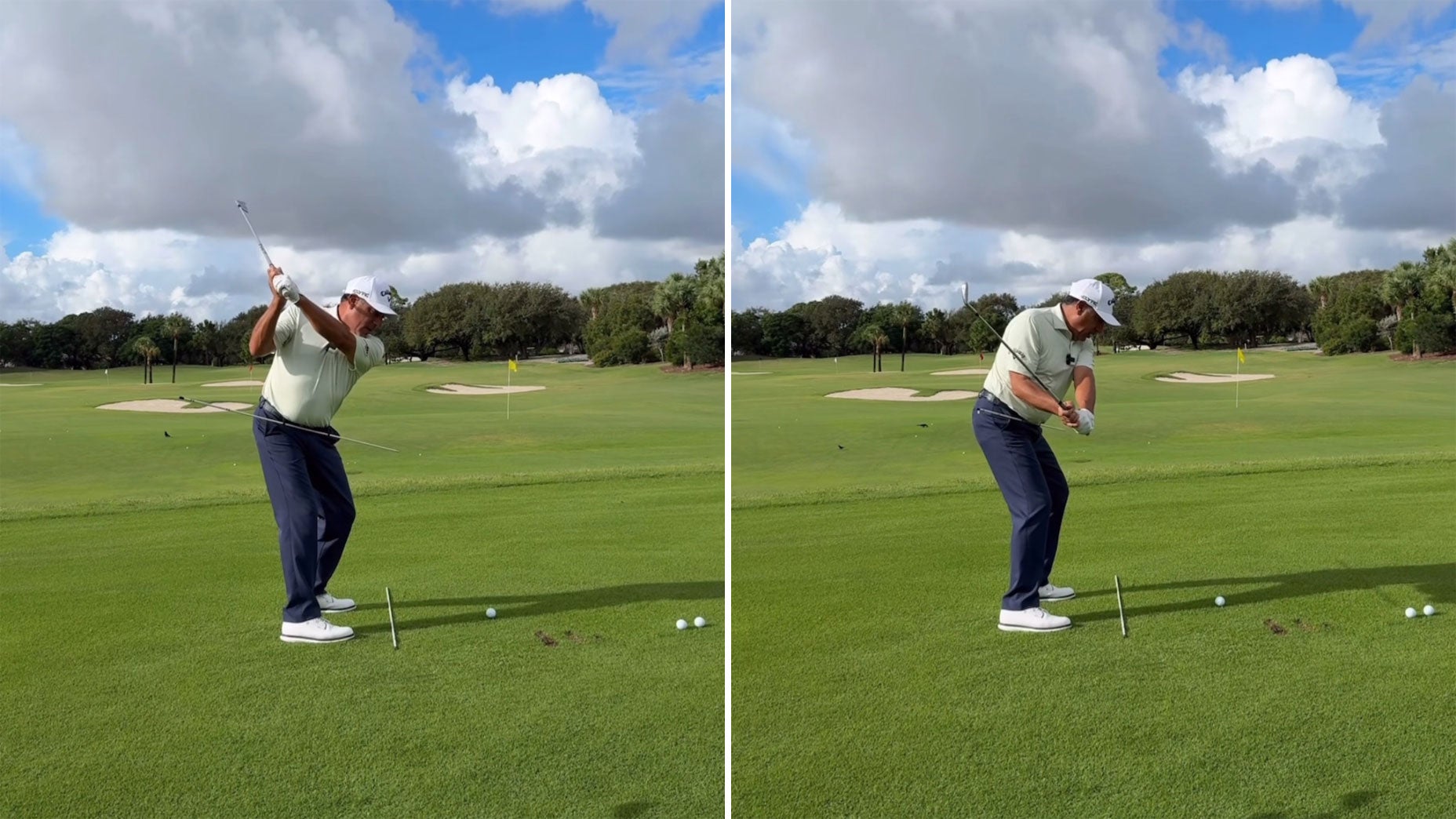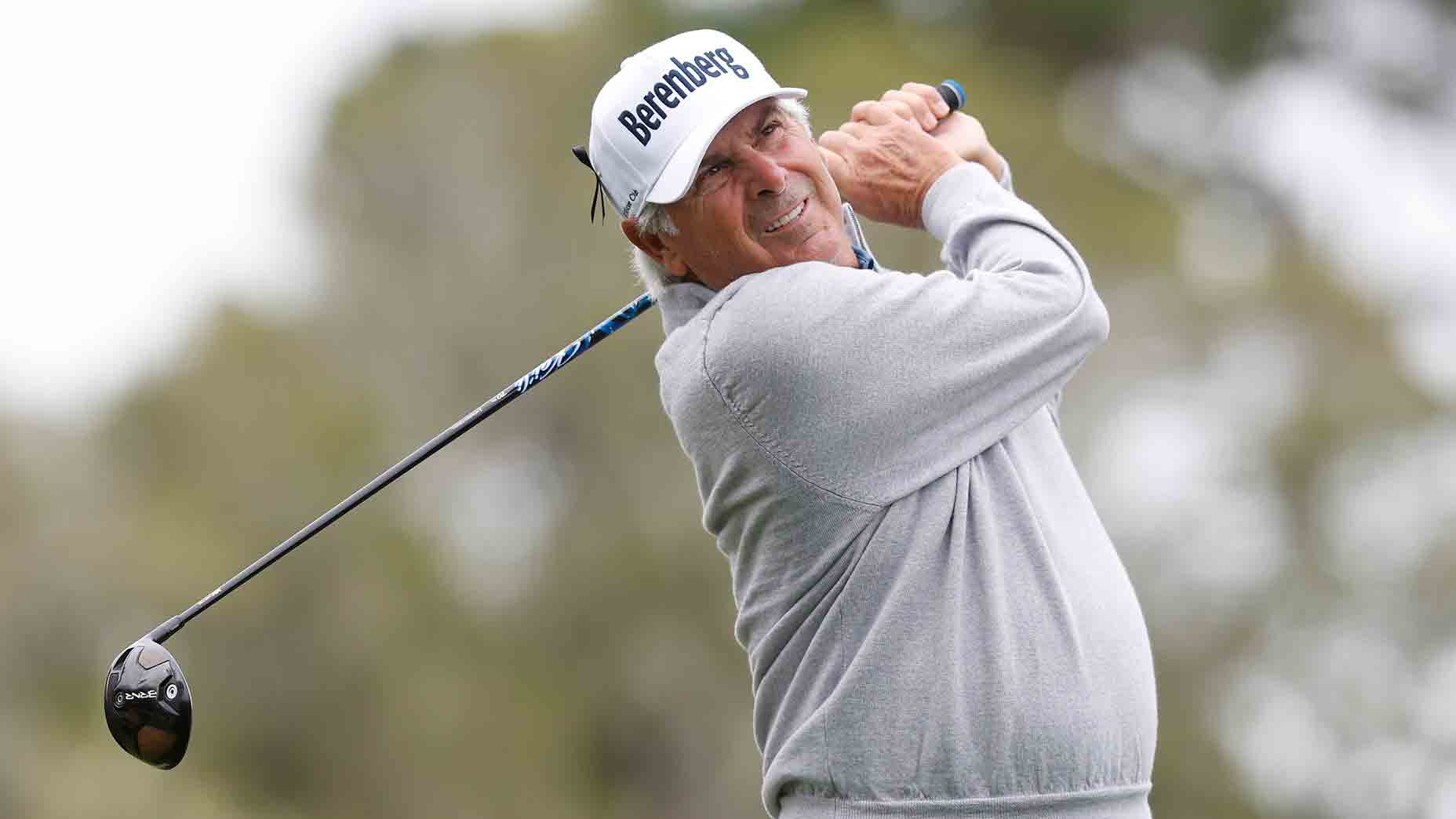Golf instruction is ever-evolving, but the best advice stands the test of time. In GOLF.com’s new series, Timeless Tips, we’re highlighting some of the greatest advice teachers and players have dispensed in the pages of GOLF Magazine. Today, we look back at our July 1998 issue when Fred Couples shared five keys for accuracy with your irons. For unlimited access to the full GOLF Magazine digital archive, join InsideGOLF today; you’ll enjoy $140 of value for only $39.99/year.
Everyone wants to make more birdies. Not only do the circles on your scorecard give you bragging rights over your playing partners, they also help you shoot lower scores. Now that’s a win-win.
Pros can make birdies in bunches, which can make ’em seem easy. For recreational players, though, finishing a hole under par is a rarity.
If you want to make more birdies, it’s important you stick the ball close with your irons. For more help with that, we look to 15-time PGA Tour winner Fred Couples. Back in July of 1998, Couples coach Paul Marchand shared his five keys for iron accuracy with GOLF Magazine, which we’ve outlined below.
Freddie’s 5 keys for iron accuracy, by Paul Marchand
Fred Couples is famous for his long blasts from the tee, but incredibly accurate iron play has been a keystone of his career. Throughout the 1990s, Fred’s name has peppered the top of the PGA ‘Tour’s year-end stats not only for driving distance but for greens in regulation, low scoring average, and eagles and birdies, all products of his laser-like precision with his irons.
Case in point: At last year’s Players Championship, he aced the fearsome par-three 17th at the TPC at Sawgrass. Later in the year, he holed approach shots at the British Open, PGA Championship, and Ryder Cup. And at this year’s Masters, Couples led the field in driving distance, but more importantly, set up four under-par rounds with iron shots that appeared as if they were fired with the aid of a lens and cross hairs.
These kinds of results certainly involve some good fortune, but ball-striking skill is the backbone of any game that produces as many “lucky” shots as Fred’s has. In this article, I’ll explain the five accuracy keys that I’ve watched Fred masterfully execute since we were teammates at the University of Houston. As Fred’ coach, I’ve found that when all of these keys are working, Fred is tough to beat. His accuracy skills give him the ability to hit the ball where he wants, when he wants.
Whatever your ability, increasing your accuracy is a sure path to lower scores.
1. Freedom of motion
Fred’s mental and physical approach to golf can be summed up in three words: freedom of motion. It’s also the chief characteristic of his swing. He doesn’t force any movements or manipulate the club through impact. Fred understands that the great paradox of the swing is that the more you try to control the club through impact, the less control you have over the shot.
Trying to steer the club into impact is an epidemic flaw among amateurs, sometimes even among those with strong swing mechanics. Mechanics are certainly the foundation, but playing golf requires a swing that goes beyond positions. It needs to be a free-flowing motion to be effective.
Working on positions has its place: the practice range. When practicing your mechanics, don’t worry too much about where the ball goes. Your goal should be to develop a feel for the skill you’re trying to learn. Before you end a practice session though, it’s vital to add freedom of motion back into your swing by trusting the new feeling you’ve been working on.
2. Rhythmic transition
Fred has a very long swing that gradually, almost imperceptibly, builds acceleration in the downswing. His trademark look of effortlessness is the result of rhythmic motion in the transition area, where the backswing ends and the downswing begins.
Here’s how Fred Couples learned to save a shot per roundBy: Josh Berhow
It’s in this transition area that most amateurs fall victim to “hitting from the top,” swinging the club out and away from the body while trying to rush the club back to impact. Fred does just the opposite: As the club reaches the top of his swing, he starts the downswing by moving his hips and his left leg diagonally right of the target line. Simultaneously, his right elbow starts to drop quickly, albeit smoothly, to his side and then his torso unwinds powerfully.
These — synchronized movements result in a very shallow clubhead path from slightly inside his stance line. This path promotes a full release of the clubhead through impact, a consistent low point at the bottom of the swing, and the ability to repeat and control the speed of his swing.
3. Clubface (and body) rotation
The ability to to consistently square the clubface at impact is the essence of accuracy, but conscious manipulation will never get the job done. In the hitting area, the clubface should rotate on an arc from open to square to closed relative to the target line. ‘Trying to force this action, with your hands or right shoulder, will lead to wild inconsistency.
As the club swings through the hitting area, the clubface rotates at a rate similar to the amount the body is rotating — if you let the club swing freely. The more the two rotations match, the more accurate you will be. This takes the obligation of squaring the clubface literally out of your hands.
‘To understand how the clubface moves in harmony with the body, make a full practice swing, stopping the club at waist-high on the backswing and waisthigh on the through-swing. At both points, the toe of the club should be pointing upward, and the shaft and clubhead should be in front of your body and parallel to the target line: If so, your swing is squaring the clubface through impact and your body is rotating in sync with it.
4. Develop feel
Good mechanics and feel are like the chicken and the egg: It’s a puzzle to figure out which came first.
You should have some understanding of how your swing works mechanically, but you must know what it feels like when it is working. A popular term for this is “muscle memory.” Scientists might argue whether or not this term is accurate, but it does convey the notion.
To best execute your swing on the course, you need to be confident that you can repeat the feeling of a good swing from memory. Then the mind is free to let the body go. This is an intangible feeling that Fred trusts and relies on heavily, and you should too. Golf may be a thinking person’s game but trusting your swing and letting it happen is where golf becomes a sport.
Fred Couples taught me 5 things in 27 minutes. Here they areBy: Dylan Dethier
One of the best ways to develop this feel is to hit shots of different distances with the same club. Start with a 6- or 7-iron, making a full turn and complete motion but swinging so smoothly and slowly that the ball flies half its normal distance. See how many balls you can hit solidly and that same abbreviated distance. Then vary the distance by gradually changing the speed of your body rotation.
The ultimate test is a favorite of Fred’s: hitting a driver or 3-wood to a short par three. In these photos, Fred is hitting a 3-wood from 147 yards, about half his potential with this club. The only change he makes is slowing his body and keeping the club moving in syne with the slower rotation.
Learning to vary the speed of your swing will give you a great feel for the club. This awareness will breed confidence in your ability to repeat the motion without thought, an instinct that leads to more consistent ball-striking.
5. Consistent pre-shot routine
One trait that all professionals share is a commitment to their pre-shot routines. Fred is no exception. Amateurs, on the other hand, rarely have a routine, which is puzzling since it is the easiest “pro move” to imitate.
Once over the ball, a pre-shot routine triggers the mind and body to swing from memory, not from a list of mechanical instructions. Performed correctly, a routine will clear your mind of everything except target visualization and a confident anticipation of how it will feel to execute the shot.
Fred confines swing thoughts to the practice tee. And when he’ working on something, he doesn’t care where the ball goes. He just concentrates on his mechanical thought until it becomes part of his feel. Once that is accomplished, he switches his focus back to the target with the help of his routine and lets go of the swing thought. In addition, Fred often rehearses key shots he’ll need on the course while on the practice tee, complete with his pre-shot routine.
Throughout this article, Fred and I have defined key concepts like freedom, rhythm, and feel that can make your swing more accurate. These keys, once a part of your golfing instincts, will combine to improve your accuracy. Use them in your next round and you might knock one in the hole like Fred.
